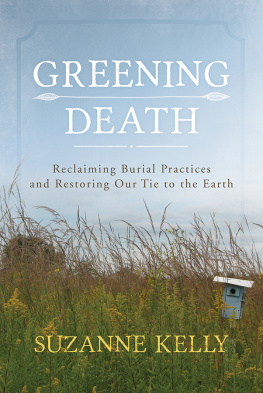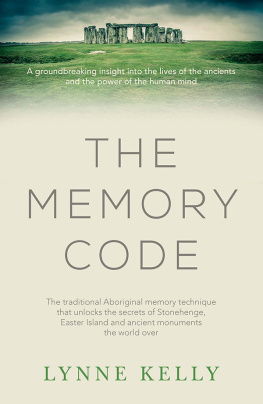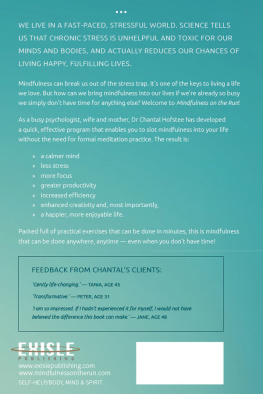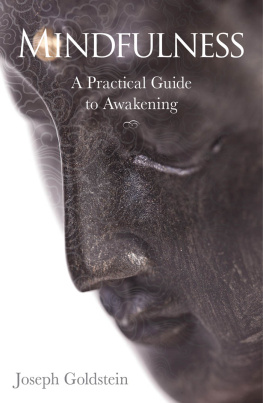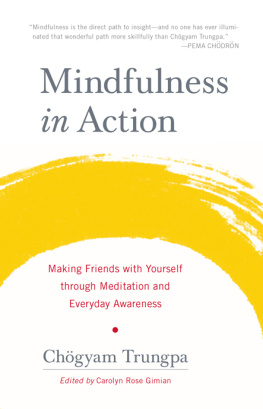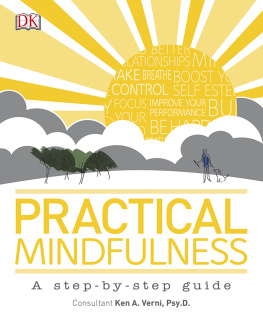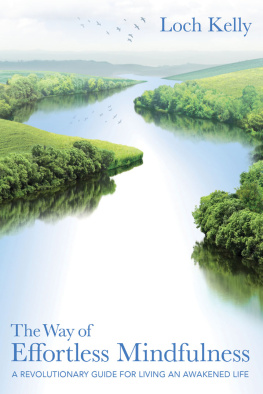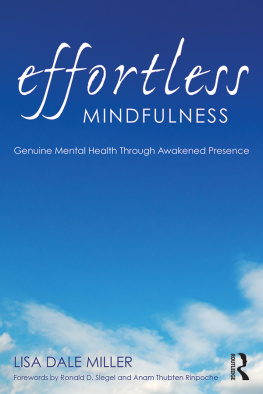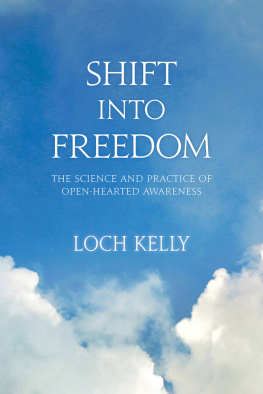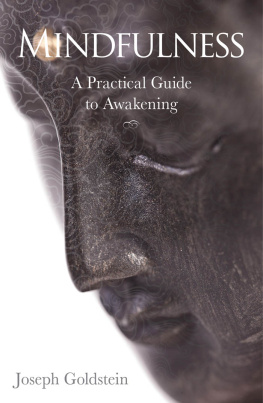
For Tom, my father, whose death illuminated my path.
Maggi, my mother, my first teacher and inspiration,
who before she passed on, set her burdens down
and fully embraced life. And to all my teachers
and students for their love and commitment
to living an awakened and compassionate life.
Contents
Introduction
M y life before I began to practice effortless mindfulness was completely different from the way it is now. Growing up, I was neither calm nor contemplative. I struggled with some form of dyslexia and ADD, and I had an underlying feeling that something wasnt quite right, that something was missing or out of balance. The only time I experienced relief from this background anxiety was while engaged in sports, feeling myself in my body and in the zone. Once, during an ice hockey game in junior high school, the score was tied 11, and after the last time-out, I dropped into a sense of well-being, effortless focus, and connection with my teammates. It was as if time slowed down, and playing together in this concentrated way brought me into a profound sense of embodied joyful flow! It was after this taste of effortless mindfulness that I started wondering: How did this happen, and could I find a way to intentionally access this joy of being in other parts of my life?
As I grew up, I became increasingly curious about and hungry for other ways of experiencing this dimension of life. Like many in my generation, I tried reading spiritual books, traveling, romantic relationships, artistic pursuits, being in nature, and even sex, drugs, and rock and roll as I sought lasting happiness. My search eventually led me to graduate school in psychology and spirituality, where a new door opened. I received a travel fellowship to study at a university in Sri Lanka and at meditation centers in India and Nepal. There I met teachers who devoted their lives to meditation, awakening, and compassionate living. With one of these teachers, Tulku Urgyen Rinpoche, I was introduced to the advanced yet simple approach called effortless mindfulness, which is a different form of mindfulness from the kind that is so popular in the West today. Effortless mindfulness is a way of opening to a natural, wise, and loving awareness that is already present within us, which reveals qualities of well-being, clarity, and compassionate action. It is a way of shifting out of the chattering mind and into the source of our mind, which is already awake and awarewhere we can rest, engage, and feel unconditional love. Effortless mindfulness is a unique form of mindfulness that allows us to immediately open to clarity and love in the midst of our busy everyday lives. The way of effortless mindfulness is about both waking up and growing up, so it combines a unique meditative and psychological approach to healing trauma and living an awakened life.
Effortless mindfulness gave me a way of relieving my underlying suffering and connecting to an inner joy that I didnt even know existed. My life is freer and easier than it was before I discovered effortless mindfulness, and for this I am deeply grateful. One example I can share is that writing my first book, with my dyslexia and ADD, took me ten years. Given the title of this book, The Way of Effortless Mindfulness, it might not surprise you that I wrote it through the practice of effortless mindfulness. Though there was still the pain of writing with ADD, this book flowed out into form in just nine months. The gift of effortless mindfulness has been finding a new willingness to show up fully with my quirks and struggles. The more Im able to let go, the greater the unconditional, loving support that has appeared within, around, and throughout my life. I experience deeper levels of vulnerability and courage by opening to parts of myself that I avoided in the past. Ive been able to feel my interconnectedness with other living beings, and as a result, Ive gained a new level of motivation to be of service.
Since my first encounter with effortless mindfulness over three decades ago, developing this practice within myself and teaching it to others has been my lifes inspiration and vocation. This book is meant to be like a letter to a friend. It is an invitation. I am more of a coach or a guide than a preacher or a guru. I am here to share pointers and principles so you can find effortless mindfulness for yourself, as if to say, Hey, the water is great! Come on in! Guess what? We can awaken together! I am convinced that accessing the natural well-being of unconditional love is learnable and teachable and hope this book will help you find what is already yours.
A Different Form of Mindfulness
Effortless mindfulness is a unique form of mindfulness. What most people in the West know as mindfulness, I call deliberate mindfulness. The teachings of deliberate mindfulness stem primarily from the Theravada and Zen traditions of South and East Asia and the initial practices of Tibetan Buddhism. Deliberate mindfulness has also been brought into secular settings in the United States through mindfulness practices for physical and psychological treatment and stress reduction, such as Mindfulness-Based Stress Reduction (MBSR). I love these practices because they provide a way of cultivating calm, patience, and intentional lovingkindness. I have taught deliberate mindfulness for decades as a teacher at New York Insight Meditation Center and have seen the practice help countless people. I deeply value deliberate mindfulness and its benefits. I am grateful for the popularity it is gaining in the West because it is allowing people to find greater peace of mind.
Effortless mindfulness, on the other hand, can be considered a different form of mindfulness, which is sometimes taught after having developed a deliberate mindfulness practice. It can also be a helpful alternative approach for those who have had difficulty with concentration practices or sitting meditation. Though often considered advanced, it can be a good starting place for people who are new to meditation. The effortless mindfulness practice begins with an opening to an already awake, optimal mind from which we can be effortlessly focused. The full unfolding leads to a life that is not more detached, however, but more embodied, intimate, courageous, and wise.
Effortless mindfulness has its roots in the worlds wisdom traditions that are often described as direct path, essence traditions, or nondual traditions. The premise of the direct approach in all meditative traditions is that the awake loving nature we are seeking is already here within us and can be accessed immediately. The primary nondual tradition that the effortless mindfulness map and practices in this book draw from is called Sutra Mahamudra, which began in North India and links the three main traditions of Buddhism: Theravada, Mahayana, and Tibetan. Sutra Mahamudra was primarily a movement of lay practitioners who developed a style of practice to facilitate awakeninga shift and upgrade of awareness, mind, and identityin the midst of everyday life. Effortless mindfulness is ideal for our contemporary Western culture in that it demonstrates that awakening is possible for anyone without having to leave home, friends, work, or family.
Benefits of Effortless Mindfulness
In bringing effortless mindfulness into the contemporary Western context, I have grown increasingly interested in the particular obstacles and supports to living a genuine, awakened life. In this book, I present a way of working with the emotional, energetic, and psychological aspects of our human experience and identity. However, this book isnt about the philosophy of consciousness, mindfulness, or awakening. I present a theory and hypothesis, but also a set of practices so that you can experience the results for yourself. I have included plenty of meditations that are direct and experientialglimpses into a whole new way of seeing and being. With effortless mindfulness, youll uncover a sense of well-being that relieves suffering at its root.
Next page




